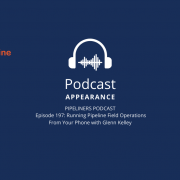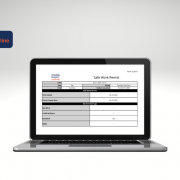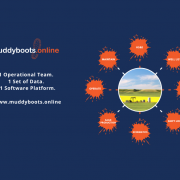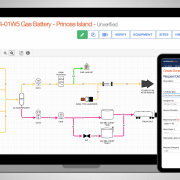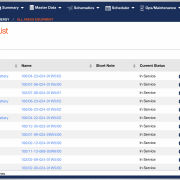1 Software Platform for the Many Hats You Wear
As an operator or field tech, you probably wear a lot of different hats throughout the day. Would one software platform help you manage all your roles efficiently?
For most operators and technicians, there are numerous forms, systems and processes required just to capture the data for their daily responsibilities.
Activities such as routine site visits, equipment preventative maintenance, inspections, scheduling service companies, health, safety, and environmental reporting may have you bouncing from one form to another and quite possibly, to multiple databases and spreadsheets. The burden of capturing important operational data can be overwhelming.
Add in the demand for quick access to that data. Supervisors, HS&E advisors, measurement groups, all rely on that data to do their jobs as well.
In our day-to-day lives, we have become so accustomed to having any answer we seek instantly at our fingertips, thanks to technology.
The demands for instant access to important operational data are no different. The days of storing paper records in filing cabinets are becoming less acceptable. Transposing data from paper forms into spreadsheets and complex databases is time-consuming and inefficient.
As field staff shift from one hat to the next, they are looking for an easier way to capture everything they do in a day, on-site. Record it once and it’s accessible to everyone in the system by days’ end.
So, there’s got to be a better way to record everything you do in a day, right?
That’s why the Muddy Boots All-in-one Integrated Operations Platform was created.
One platform. One log-in. One piece of software to support the many hats that operations and field techs must wear daily.
Muddy Boots is an easy-to-use platform with mobile offline data entry capabilities. Whether you are at an office computer or a remote field site with no cellular data service, you can still record your work.
With no per-user licensing fees, everyone in your organization can have controlled access to the information they need, including service providers. Muddy Boots has a unique feature that lets your service providers connect right into the system. Manage your service companies and have them enter information directly into the system further streamlining your operations.
After all, you’re all working together as a team, so why not use 1 software system?
For more information, check out our short videos on our website under “Products”.
One Stop Shop – Where does technology go next
One Stop Shop – Where does technology go next
A conversation with industry about the future of operations and how new technology can help.
Q: Why do you see One Stop shop as the way of the future? Why is it worth investing in?
A1: Everyone is moving in this direction – service companies are offering suites of software to augment their services. Data has become more than just a buzzword, we currently have multiple redundant databases that are becoming a strain to manage. Streamlining everything into one database will mean less time spent updating, training and purchasing new software.
A2: One stop shop comes down to one thing – Efficiency. We can maintain one asset list with only one data entry point (low admin time for operators and primary administrators). With the on-going fluctuation in the market, finding ways to be more efficient is our only path.
A3: Its not, I don’t see one stop shop as feasible, there are too many different use cases to be neatly tied up in one program. That said, linking all the databases together will allow us to achieve the efficiencies we need.
Q: What are the biggest issues you face as an operations manager? How would a one stop shop help you solve these issues?
A1: Right now, the regulatory side is always getting bigger and more complex. It’s become almost a fly by the seat of your pants endeavor – hoping you’re not negligent but it’s too big to hold all in your head. Properly set up software allows you to see what’s being missed – and when you’re always looking in one spot you don’t miss things.
Another thing that strains my time is cost tracking – I am trying to predict the future. Combining the predicted costs against the actual would provide me a way collect valuable data and make better predictions in the future.
A2: My biggest concern as an operations manager is that I waste too much time on admin and documentation. So, it really comes back to efficiency. I need to be able to do more with less and keep the same results.
A3: One of my biggest struggles as an operations manager is time for proper deployment. There seem to be many conflicting departments, all fighting for their benefit. This comes at the detriment to proper deployment, they are looking for a silver bullet and not willing to go the whole way to incorporate the software into the company as a whole.
Q: Are you seeing solutions available to meet those needs?
A1: Things are getting there. I’d love to see a map interface that allows me to click the inspections and activity that needs to be done or leave a note at a specified location.
A2: Nothing out there does it all and those that exist still have work to do to bring them up to speed.
A3: No – I don’t see anything available at the moment. Maybe with connections between software in the future. But I don’t see everything ever fitting together in one piece of software
Q: In an ideal world what would One Stop Shopping accomplish for your company?
A1: Having a One Stop Shop would free up more resources, with less time required for training and maintaining data. Additionally, having everything in one place will help us identify issues sooner and see ongoing trends.
A2: Increased Efficiency.
A3: We’re trying to move past the one stop shop idea to AI. This way we can inform our maintenance schedule and save money on our Maintenance program.
Q: What would you do if you had an hour of time freed up in your work day?
A1: More of the same, I’d check in with the field more regularly, keep the service companies on track, ensure safety where it’s supposed to be and be the management presence.
A2: Well I see this helping everyone so it depends on their role, E&I or Maintenance individuals will be out getting work down, analyzing the whole program to make it better. Operators will have get more work done and eventually you’ll need less operators to do the same work. Bottom line, an extra hour will help you make a difference and lower the bottom line for the company. After all, a job done in less time makes dollars for the company.
A3: I’d spend my time focused on improving maintenance strategies and tactics.
Q: What is your Operations Mantra? Planned precision, Focus on the exceptions, Put out the fires as they come?
A1: We are focused on growth, so we have a simple strategy. Do it right the first time. Keep regularly scheduled items moving in the right direction. This allows us to keep downtime and incidents to a minimum. In the increasing regulatory environment, I need to see the whole plan from and Maintenance and a regulatory perspective.
A2: We are moving towards planned precision with a weekly schedule to keep it all together.
Step 1: Ensure what you need to get done is getting done and documented
Step 2: Analyze and understand what you can change. Make those moves towards optimization
We have an annual meeting to discuss things we can change. Moving past the status quo to what is better. We’ve been able to make those changes over the years by using our electronic documentation and trends to back up our choices.
A3: We are already in the category of Operations by exception, predictive strategies and monitoring. No longer on time intervals but relying on sample results and conditional alarming.
For example, we are focusing on field compression and oil filters. This represents huge savings for the company as it is a strain on man power and affects available production hours. By tracking all the details that makes each compressor unique (Runhours, weather, oil filter differential monitoring, vibration, swabs and oil samples) we now only shut down when we need to, not because it’s been 3 months.
Q: What’s next in operations?
A1: We will keep heading to more automation, more wells under each operator, sites with entirely remote operation, operators are only going to show up to fix things.
A2: Hmm, I’ve never really thought about the future – but it will definitely be a change from the past.
Whatever solution is put forward, must continue to be more efficient. I see AI analysis playing a big role. Finding and exposing the details to make the whole operation more efficient, what is wrong and needs attention the quickest.
A3: Our company sees the future of operations in AI. We have already started integrating pump off tickets etc… into our field automation to help us define maintenance. This will continue to include more of our maintenance activities and help us optimize our field schedule.
The world continues to change, both subtly overtime and drastically as we all experienced with the recent COVID-19, technology will play an increasingly critical role. Muddy Boots is excited to be a part of these changes.
The Central Hub for your Well Data and Operations
The Central Hub for your Well Data and Operations
Background
Torc Oil and Gas (Torc) is a 20,000+ BOE/day company with diverse geographic operations. They maintain a combined 10,000 operated and non-operated wells in three separate provinces, Alberta, Saskatchewan and Manitoba. With increasing regulatory challenges, and fewer people to help get the job done Torc looked to software to fill in the gaps.
The Project
Torc is streamlining its operations data in one location. They were looking for a solution that would allow the team to track, enter, store and search data, regardless of department and job title. After some deliberation, the corporate well list was identified as the central hub that connected the different departments and provided the framework to support the operations most operational functions at Torc e.g. HSE Incidents, Maintenance Work, Compliance-based Inspections, Calibrations, Analysis and Well Data. The centrally organized corporate well list also presented the chance for Torc to continue incorporating processes as they came up, e.g. abandonment & reclamation, relying on the existing set of data.
The Challenge
The corporate well data is generally stored in various different places, often with different departments responsible for maintaining and storing critical pieces of information. This results in maintaining redundant datasets, calling into question which data set is correct. Additionally, the inaccessibility of critical well data leads to lost time spent retrieving information.
The current method of storing well data presents the following problems:
-
Dispersed data sets
-
A lack of continuity between departments
-
Little reliability or traceability of the information
-
Continuous attempts to reconcile with the public data
-
Confirming and tracking ever-shifting working interests and cost centres
-
Maintaining Asset retirement obligations
-
Abundant manual entry errors
-
Unavailable data locked into a limited number of seats
While most of this data has been accessible before, it has been hard to view the complete set of data in the same place. Therefore, the primary focus of the muddyboots.online corporate well list was to present all the information in one spot.
The Process
After identifying the Well List as the central connection for all the data, Torc began to collect all their well data and populate muddyboots.online. While more data is being added all the time, Torc had collected a sufficient amount of data to begin using the corporate well list in May 2019. Since then, Torc has worked towards the following objectives:
-
Continuity of information transfer – both between internal departments and external partners. This is especially pertinent in regards to Torc’s diverse geographic operations.
-
The well data cards should be easily accessible to field operators and head office
-
-
Moving the company well spreadsheets to muddyboots.online in attempt to:
-
Reduced data entry errors (limited access to edit)
-
Improve searchability (beyond just the UWI)
-
Sort quickly into relevant data sets such as Non-op and Operated properties.
-
-
Increasing data-driven decisions.
-
Maintaining an up-to-date list of working interest and cost centres.
-
Providing bi-Monthly Reconciliation with public data to help:
-
Ensuring compliance with government regulatory bodies
-
Managing suspended wells and the abandonment process
-
Maintaining internal status on wells for assets in transition
-
-
Building a robust Asset Retirement Obligation process
-
Confirming geographic locations and most recent production data.
-
Increasing the accuracy of measurement schematics.
Above all, Torc has focused on ensuring the centralized corporate well list is used by multiple departments, providing a single source of truth to streamline the company operations.
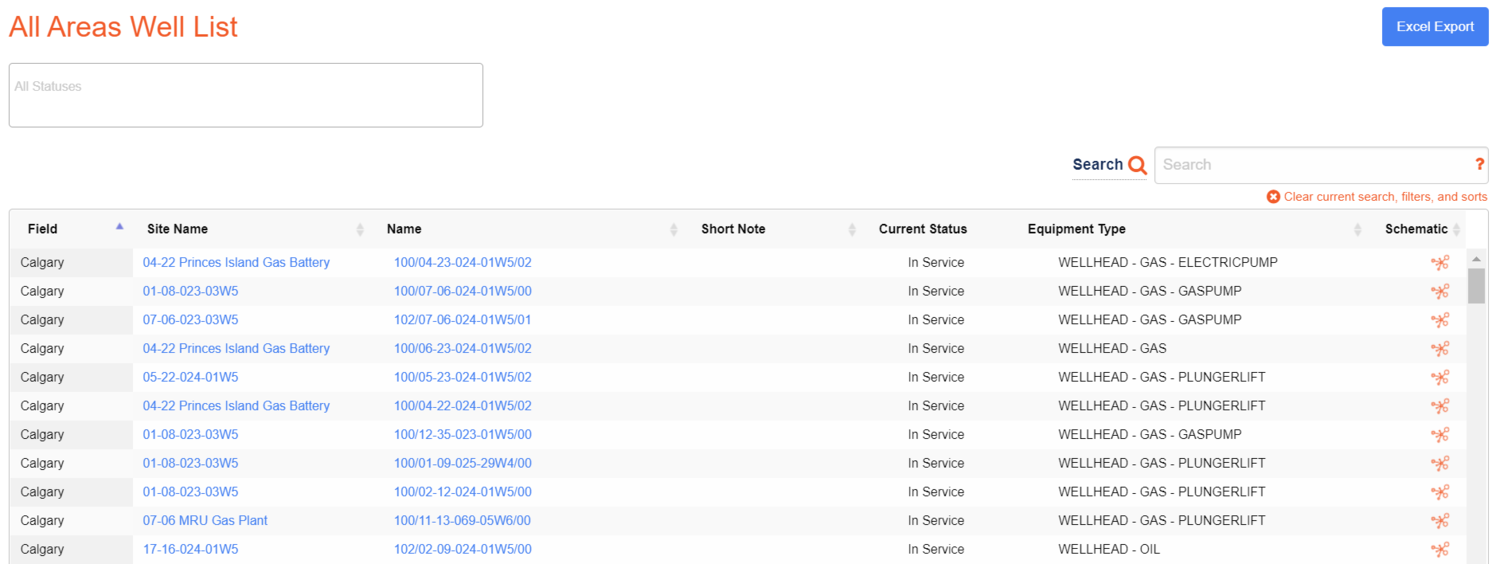
All the details start to come together in the corporate well list main data table.
The Results
While it’s still early days, Torc has seen marked improvements in the following areas:
-
Environmental performance – tracking Torc’s suspended wells and beginning to organize the abandonment process. Ensuring each unique site has a plan as Torc works towards reclamation.
-
Time-saving efficiencies – Torc employees have saved 1-3 hours/day (depending on role) spent tracking down information and are now able to dedicate that time to high value projects.
-
Improved internal communications – the well list allows separate departments to understand the data their way. So, production accounting can find their well site and all the licensing and joint venture information without compromising operations ability to find the wellhead and complete the correct PMs on the equipment.
-
Informed technical decisions – wells data cards are available immediately to each department and can be sorted on key details increasing the number of data-driven decisions. This is especially true of the field operators and shift leads who previously had limited access to the well data cards.
-
Ease of government reporting – by having the information gathered in one place Torc can gather the information needed for various government reporting quickly, regardless of what province they are reporting to.
-
Accessibility of data – cloud-based storage means the information is available when it’s needed. For example, during an external audit, the required details can be gathered right then, no need to follow up with endless email chains and attachments.
-
Decreased windshield time – reliable well statuses allow the operations team to schedule only what is needed decreasing drive time and improving worker safety.
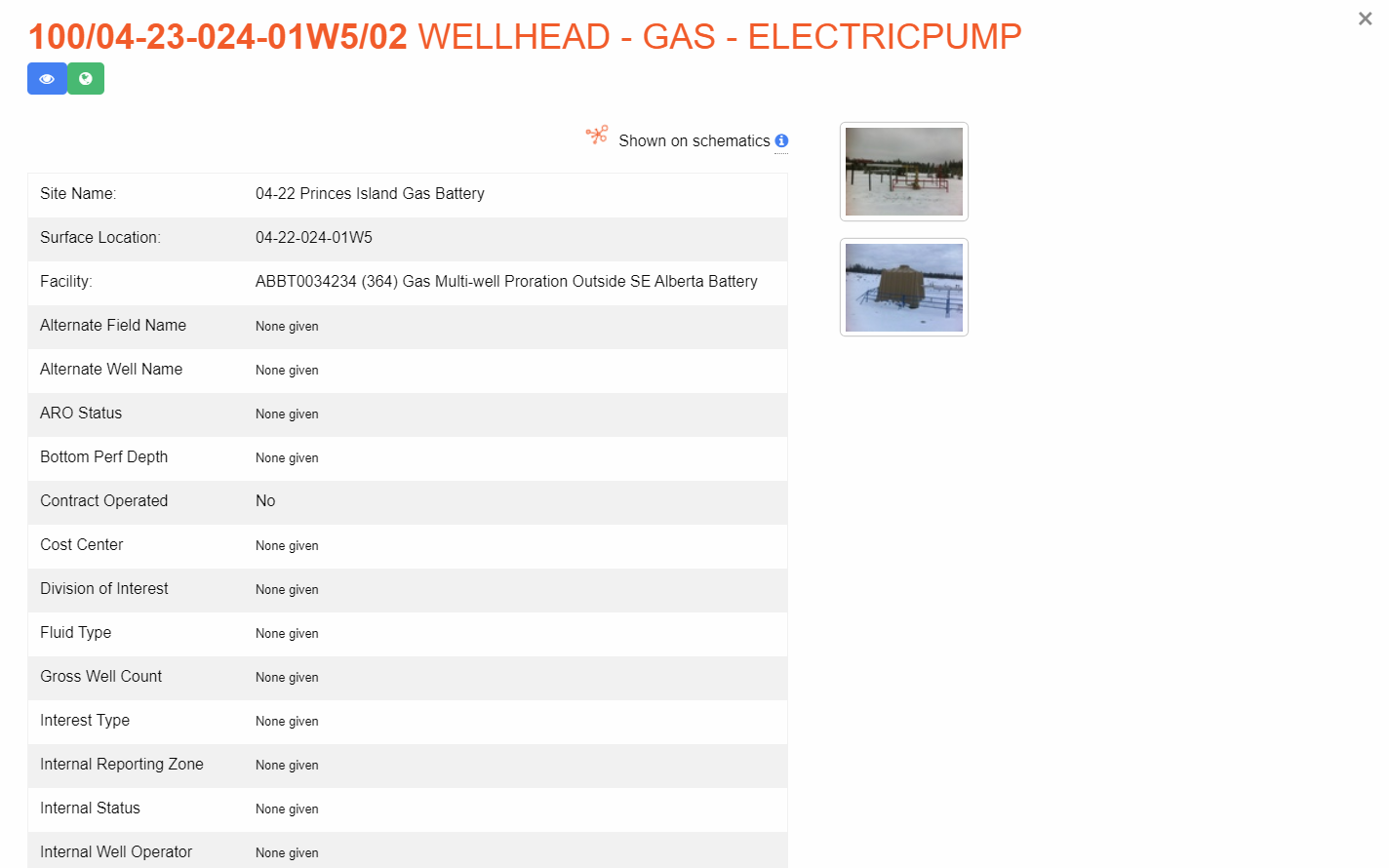
Each wellhead has a comprehensive list of details, allowing many different users to benefit from the corporate well list.
Torc’s focus on making the corporate well list available to multiple departments has paid off providing efficiencies for the whole company.
-
The Land group has a visualization of their current owned wells and any can identify prospects nearby.
-
The Surface group can quickly differentiate between operated and non-operated leases managing differing lease requirements with confidence.
-
The Production Accounting group has been able to index the owned percentage and cost coding details to each well, making it easier to maintain these ever-changing details.
-
Operations and Safety have leveraged this central list to maintain regulatory compliance and decrease windshield time through advanced scheduling features that automatically adjust the required inspection depending on the well status.
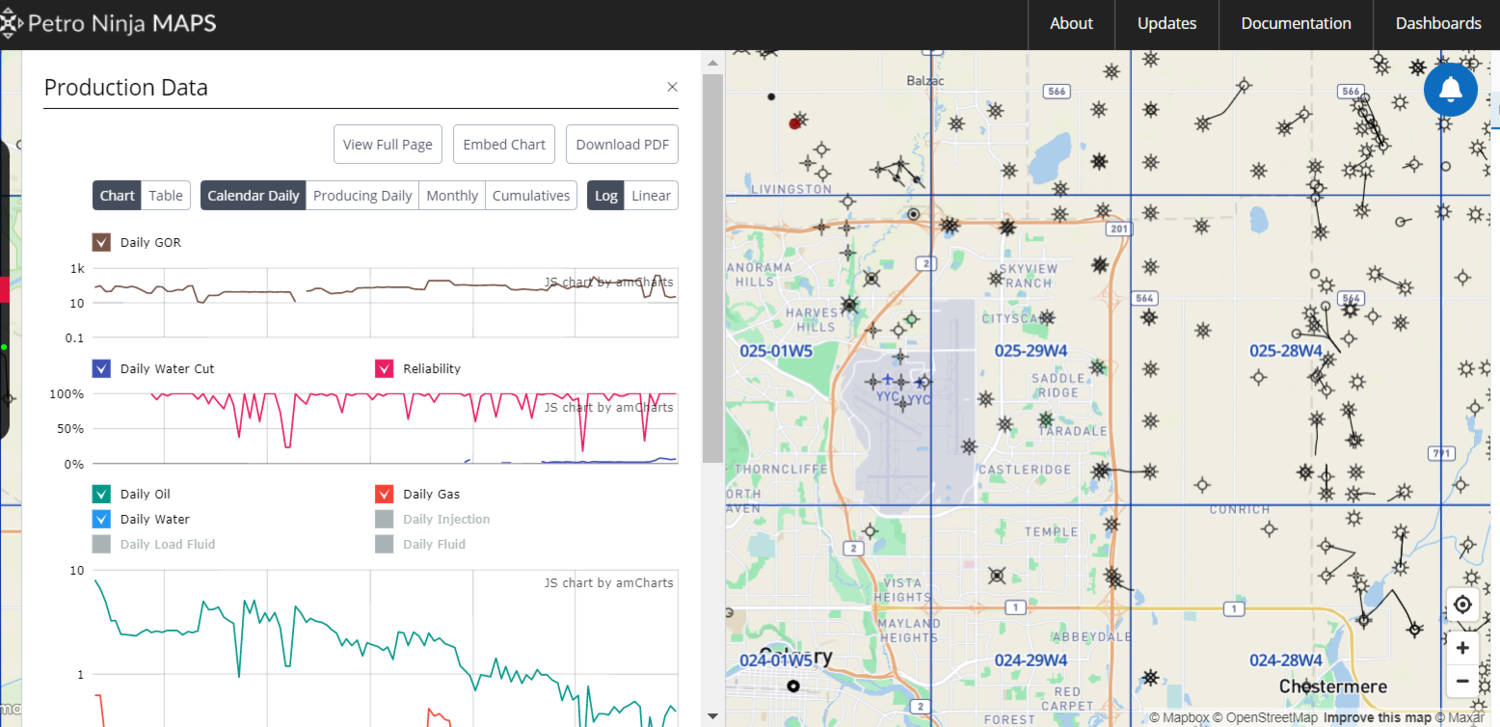
Connections to Petro Ninja has allowed Torc to see where their wells are, reconcile with the current public data and even view production data.
Pulling the various required datasets together with the corporate well list has allowed Torc to overcome the issues presented with a traditional well list and has seen increased time efficiencies company-wide. Additionally, concentrating their efforts on one corporate well list has allowed Torc to create a reliable, consistent database, moving them one step closer to successful data-driven decisions. All-in-all, the corporate well list has proven to be a powerful asset for Torc and it is still only scratching the surface of what is possible.
With the asset retirement obligations slated to be included in the spring of 2020, the Muddy Boots team and Torc employees foresee more time efficiencies to come.
New Year – New Data
New Year – New Data
New Year – New data
While not quite a catchy as the now pervasive “New Year, New You” focusing on refreshing your data might be more feasible.
Data has been championed for the last five years as the key to unlocking business success. However, as we’ve all had to learn the hard way – maintaining clean data is HARD! Luckily, taking the time to refresh your data comes with none of the emotional baggage of traditional resolutions and it can be accomplished in working hours.
Here are a few tips from the pros to help you stick to that New Data Resolution (and you don’t even have to give up chocolate or drinking!)
Start Small
Choose one element to focus on, maybe that’s ensuring all your wells have the correct license and location attached to each one. You may also want to consider limiting yourself to a specific geographic area. This could be as small as one pad – it’s a kick in the pants to get moving.
The key idea here is to make sure you’re not so overwhelmed that you stop before you even begin.
Give yourself a timeline
We are all being pulled in 1000 different directions at all times, having a timeline helps keep your data resolution on track. Make this realistic, if you think it will take 2 weeks – give yourself 2 weeks, if you need more time give yourself 2 months. Try and keep it realistic but if you’re starting to get towards the 6 months/ 1 year timeline perhaps revisit the scope of your project so you can see the progress.
Tell someone else
Having someone else in the know is a great motivator. It’s basically peer pressure for your new project. This doesn’t have to be your boss, it doesn’t even need to be someone at work – just let someone know so you’re not in it alone.
Have a well-organized storage space
There are many options here, from dedicated software solutions, like muddyboots.online, to Excel spreadsheets. This will help you access your newly clean data and make it more usable for your whole company.
Create Procedures
Now you’ve spent all this time working hard to clean it up – it’s worth taking the time to make sure you haven’t worked in for nothing. Even taking the time to write down a few steps will help set the frame for the new procedures. This will keep your newly clean data – sparkly and clean.
Keep Going
You’ve started now! Don’t stop now – keep working through those small chunks in your realistic timeline and keep the new data from getting messy with procedures.
Know when to ask for help
Hit a wall you just can’t climb? Ask for help! Maybe it’s a co-worker who is a spreadsheet wizard, or a friend who just is an organizational ninja – or even a consultant or software expert to get you on your way.
Best of luck with whatever you have in mind for the new year! Keep working towards that refreshed data and don’t be afraid to ask for help.

